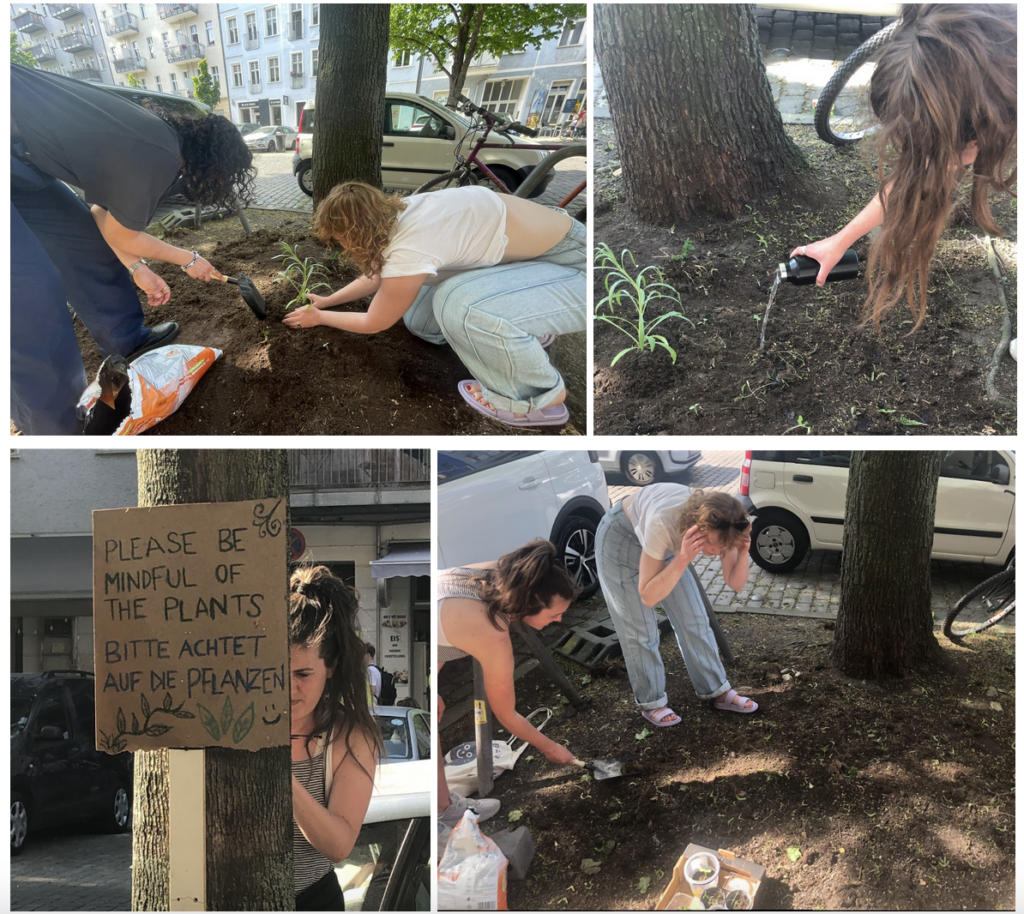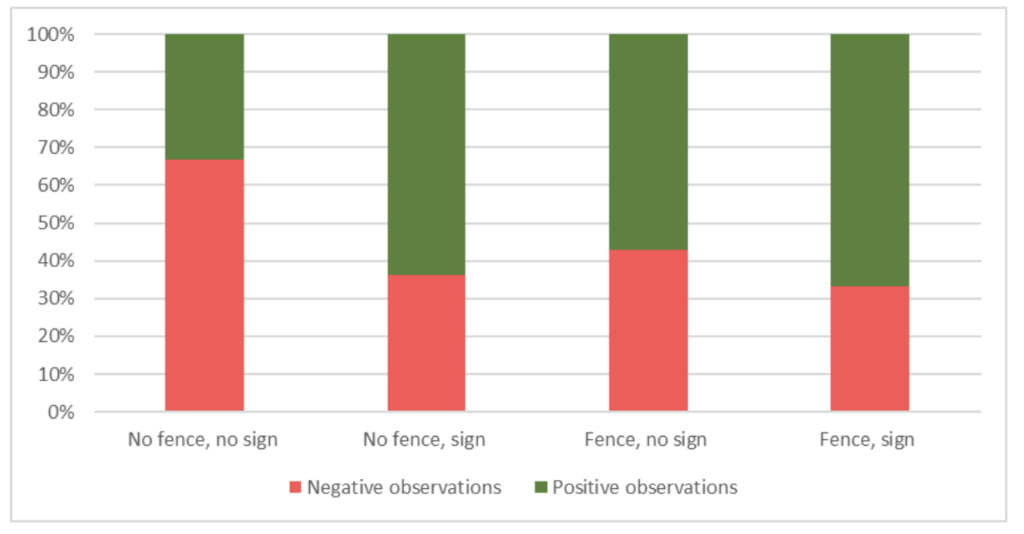by Anna, Fiona and Iqra
In this final blog post, we would like to describe our experiences from this semester and share results that we gathered from our guerilla gardening experiment. The starting point of our experiment was the concept of the guerilla garden, especially, how to protect and guard a guerilla garden in the hustle and bustle of a public city street. We wanted to evaluate how effective physical barriers (like fences) and signs would protect the growth of our vulnerable plants in public. Plants can be damaged in public in many possible ways, such as people stepping on them, driving over them, littering, pet feces and harsh weather.
Our experiment has implications for the protection of guerilla gardens worldwide. And although the experiment was quite preliminary and not executed at a large scale which would make it very scientifically precise, we think it still draws important conclusions and insights into the maintenance and survival of urban gardens. With the impacts of climate change looming over all urban dwellers, the preservation of urban green spaces – even if they’re as small as local guerilla gardens – can still be valuable in terms of the microclimate, water retention or in the case of guerilla gardened trees, carbon sequestration and shade. For this reason, exploring how to best protect urban gardens is in the best interest of all urban communities.
As we mentioned during our presentation, we used 4 different sites for our experiment:
- No fence, no sign
- Fence, no sign
- No fence, sign
- Fence and sign
To record our results, we decided to take pictures and log our observations in a diary, mainly into 4 different categories: All good, Trash, Wow, and Destruction:
- All good = All plants respected. No trash found. No vandalism.
- Wow = Observed people actively respecting the plants
- Trash = Trash found on side
- Des.: = Destruction, meaning sometime got destroyed/broken

51% of the time we made an observation, everything was alright. 35% of the time, there was trash. On two occasions for the signed and signed+fenced locations, respectively, we noticed people were actively making sure not to disturb the plants by stepping on them or allowing their dogs to poop on the plants. On two other occasions, we noticed destructive activities on the sites without fences and signs. Figure 1 below summarizes our observations in a chart.

Generally, our findings indicate that if you want your guerilla garden to be as protected from harm as possible, put up a sign and a fence! Some extra points to consider that we couldn’t cover in our experiment due to time constraints: how big the fence is, how many signs or what type of signs, a deeper analysis of where to place the guerilla garden in the first place. There are many other factors that could play a role in the survival of a guerilla garden, and since they are in public, anything could happen to them! In this regard, we can’t even anticipate every possible outcome of a guerilla garden. So in the end the best thing to do is just plant what you can, protect as much as you can and hope for success!


